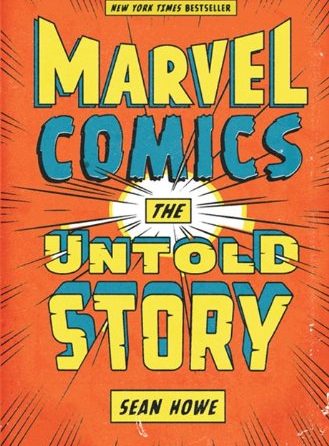
- Series: Greenwich Village Trilogy (Book 2)
- Paperback: 176 pages
- Publisher: Dover Publications (November 13, 2019)
- Language: English
- ISBN-10: 0486838048
- ISBN-13: 978-0486838045
- Product Dimensions: 4.9 x 0.6 x 7.9 inches
Three BLIPs for The Unicorn Girl, the second novel in the Greenwich Village Trilogy, a late 60s series now in reprint.
I say three BLIPS as I believe that is the minimum requisite number of parallel world hops needed for one to wake up to the fact that “HEY!, things aren’t just weird, they’re different!”
Weird and different is what you get in both this novel and its surrounding series. You will note that this makes sense because The Unicorn Girl is part of the series and if it weren’t weird and different, it would be part of some other series, and this series wouldn’t be called The Greenwich Village Trilogy, because at that point it would be a duology.. I did suggest you hold on tight at the beginning. I didn’t? Well – Hold On Tight.
Way back in that ancient era bracketed by Woodstock and Kent State, three friends named Chester, Michael and Tom, inhabited a weird and different world often referred to as Greenwich Village. It is believed to have once been located on the isle of Manhattan, but that’s apocryphal. It may never have existed at all. Alternatively, it might still exist but you don’t. Things have a way of evening out.
These three friends were moving through the bohemian life of the 60s – crash pads, flower children, paisley and pot, coffee house gigs and blotter, when they decided to write about their experiences, reasoning, as they no doubt did, that there was no better inspiration for science fiction and fantasy stories than a small world where weird and different things routinely happened and were thoroughly ignored by the powers that be because weird and different (not to mention strange and outrageous) was the de facto state of being.
Naturally, these being weird and different novels in a weird and different series, they not only chose to write about these adventures, they also chose to be the main characters, or, rather, to write themselves in as the main characters. But it’s not as simple as that. In fact, this is where it starts getting complicated.
Perhaps an interogatory will help. (To further complicate things, we’ll treat the tense as if these things are happening now, rather than in the past. Even though it complicates things further, it simplifies them.)
Does the Greenwich Village that the authors claim to live in actually exist? It is entirely possible that it is a construct, fabricated for the sole purpose of giving their novels greater veracity, although it might seem to be counter-productive to create a fictional real world that is nearly as (weird and different) unbelievable as the fictional-fictional world created for the novels. One expects a certain contrast between the world an author lives in and the world(s) they create in their fiction. Then again, they do say truth is stranger (weirder and different) than fiction, so these novels – praised as they may be – could be nothing more than an elaborate in-joke for their fellow Villagians, demonstrating that no matter how weird and different their fictional worlds may be, the Village is truth.
Presuming for the moment that their real world background is essentially real, what then do we make of the interjection of the authors as eponymous characters in the so-called fictional adventures? Or, we hesitate to ask, how much is based on things that actually happened, or, how much is based on things that the authors thought had actually happened, and how much is pure fantasy? We may never know.
One thing is for sure. The individual reader will not even begin to be able to sort this out without first reading. They may mutter the word “balderdash” while flipping pages or they may begin nervously looking out their window to assure themselves that reality is still real. Or that what they think of reality is still reality. (Anyone who says “balderdash” while reading this novel, even if it is under their breath, may very well be living in their own novel.)
Yes, yes, yes, but what about the story itself, you ask.
Well, like most good science fiction, it features the I, Ching. It also features flying saucers, unicorns, circuses, famous literary heroes inhabiting their own realities, drinks spiked with acid (maybe), Tiger tanks, interesting clothing choices, steam locomotives, prestidigitators, telepathy and a plot by caricatured aliens to rid the multiverse of the “grek problem”.
If successful, this plot will have a profound effect upon all of us.
If you want more, you’ll have to visit some other timeline where an alternate version of me has chosen to go in a different direction. Perhaps the one in which I discourse at great length on how much The Unicorn Girl presages Heinlein’s The Number of the Beast (in fact, reading this novel may have prompted Bob to take a second look and produce the notes that ended up in The Pursuit of the Pankera. It’s the multiverse: not only could it have happened – it DID happen). In that review, my conclusion was that if you read this novel, there’s no need to wade through TNOTB, although chances are you’ve already done that, in which case, reading this novel will make you feel better about yourself.
Oh, and BTW. If you figure out a way to read my alternate reality reviews, let me know.
(The Unicorn Girl, by MIchael Kurland, was originally published in 1969 as the sequel to Chester Anderson’s Hugo Award nominated novel The Butterfly Kid. It was followed by T.A. Water’s The Probability Pad. All three together form The Greenwich Village trilogy, because all three novels are based in Greenwich Village. Maybe.)











A lovely review – explains some things that I have long wondered about. Thank you Steve.